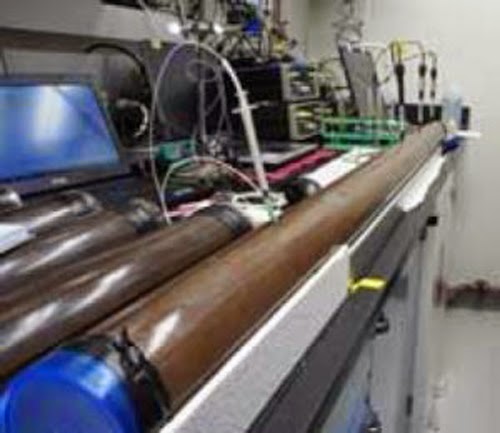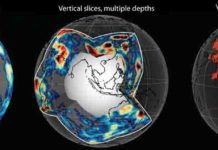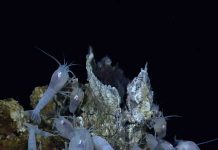
An international team of scientists led by a University of Rhode Island oceanographer has found oxygen and oxygen-breathing microbes all the way through the sediment from the seafloor to the igneous basement at seven sites in the South Pacific gyre, considered the “deadest” location in the ocean. Their findings contrast with previous discoveries that oxygen was absent from all but the top few millimeters to decimeters of sediment in biologically productive regions of the ocean.
Their research was published this week in the journal Nature Geoscience.
“Our objective was to understand the microbial community and microbial habitability of sediment in the deadest part of the ocean,” said Professor Steven D’Hondt at the URI Graduate School of Oceanography. “Our results overturn a 60-year-old conclusion that the depth limit to life is in the sediment just meters below the seafloor in such regions. We found that there is no limit to life within this sediment. Oxygen and aerobic microbes hang in there all the way to the igneous basement, to at least 75 meters below the seafloor.”
Based on the researchers’ predictive model and core samples they collected in 2010 from the Integrated Ocean Drilling Program’s research ship JOIDES Resolution, the researchers believe that oxygen and aerobic microbes occur throughout the sediment in up to 37 percent of the world’s oceans and 44 percent of the Pacific. They found that the best predictors of oxygen penetration to the igneous basement are a low sedimentation accumulation rate and a relatively thin sediment layer. Sediment accumulates at just a few decimeters to meters per million years in the regions where the core samples were collected.
In the remaining 63 percent of the ocean, most of the sediment beneath the seafloor is expected to lack dissolved oxygen and to contain anaerobic communities.
While the research team found evidence of life throughout the sediment, it did not detect a great deal of it. The team found extremely slow rates of respiration and approximately 1,000 cells per cubic centimeter of subseafloor sediment in the South Pacific gyre — rates and quantities that were nearly undetectable by previous techniques. “It’s really hard to detect life when it’s not very active and in extremely low concentrations,” said D’Hondt.
According to D’Hondt and co-author Fumio Inagaki of the Japan Agency for Marine-Earth Science and Technology, the discovery of oxygen throughout the sediment may have significant implications for Earth’s chemical evolution. The oxidized sediment is likely carried into the mantle at subduction zones, regions of the seafloor where tectonic plates collide and force one plate beneath the other.
“Subduction of these big regions where oxygen penetrates through the sediment and into the igneous basement introduces oxidized minerals to the mantle, which may affect the chemistry of the upper mantle and the long-term evolution of Earth’s surface oxidation,” D’Hondt said.
The principal research funders were the U.S. National Science Foundation (NSF) and Japan’s Ministry of Education, Culture, Sports, Science and Technology. The project is part of the NSF-funded Center for Dark Energy Biosphere Investigations, which explores life beneath the seafloor. The research is also part of the Deep Carbon Observatory, a decade-long international science initiative to investigate the 90 percent of Earth’s carbon located deep inside the planet.
“We take a holistic approach to the subseafloor biosphere,” said Rick Murray, co-author of the study. Murray is on leave from Boston University, currently serving as director of the NSF Division of Ocean Sciences. “Our team includes microbiologists, geochemists, sedimentologists, physical properties specialists, and others — a hallmark of interdisciplinary research.”
The research team includes 35 scientists from 12 countries. In addition to D’Hondt, URI scientists contributing to the research are oceanography professors Arthur Spivack and David C. Smith, Marine Research Scientist Robert Pockalny and graduate student Justine Sauvage.
Reference:
Steven D’Hondt et al. Presence of Oxygen an Aerobic Communities from Seafloor to Basement in Deep-Sea Sediments. Nature Geoscience, 2015 DOI: 10.1038/NGEO2387
Note: The above story is based on materials provided by University of Rhode Island.










